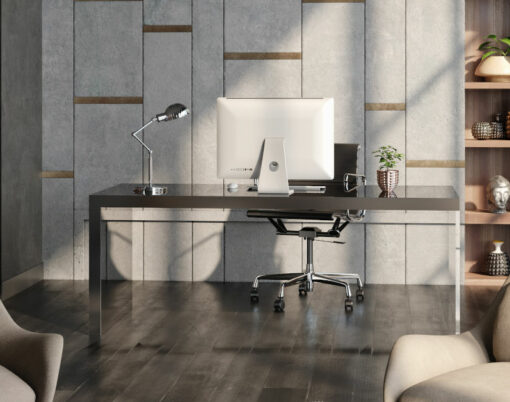Words by Martin Waller, founder of global design house Andrew Martin.
As the saying goes, travel broadens the mind. Gliding down the Amazon river in a carved canoe will stretch and contort it; escaping to Cambodia to hunt for temples beyond Angkor Wat will ignite something within it. Travel becomes an addiction, a compulsion that when fed, still groans with hunger.
The gift of travel has given us the opportunity to see and absorb cultures and places so different from our own. We can see wonders for ourselves that were previously just thought to be travellers’ tell tales. Exploration gives us access to the world’s magnificent treasure chest of cultural traditions and upon returning home, people often want to share these experiences through the medium of their own sanctuary. After all, a home is a backdrop to life and so its interior design should reflect your personality and the things that you love, including the places you’ve visited.

A design scheme begins with one detail: a particular colour, an interesting texture, or a storied theme which can come from your favourite artefact or maybe a quirky personal item sourced from recent travels. It is from there that the room builds layer upon layer, and you can play with mixing materials like steel with stone, leather with hessian, old with new. It is about telling a story and creating surprise with the array of beautiful shards along the way.
Since the wake of the travel generation, the accessibility to and interest in foreign textiles has boomed. People are opting for fabrics that bring an energy or a feeling and look like they are one-off, unique piece. Now in British interiors you often see kilim stripes from Asia, mud cloth motifs from West Africa, and embroidery from Mexico.

Another example is the Berber rug. The style of rug originates from the nomadic Berber tribes of the Atlas Mountains in Northern Africa. With a rich history and tradition of rug weaving, it is not surprising that their geometric designs and trellis motifs have translated into modern interiors schemes. Berber rugs are defined by their artisanal style, boasting asymmetrical trellis designs in natural wools and dyes in soft cream and charcoal. The Berber rug embodies the fusion of century-old weaving wisdom, a classic colour scheme and quirky, somehow contemporary patterns, making it a go-to rug for modern interiors.
Beyond the Berber tribes and their timeless creation, it was in Thailand that I first saw the miracle of silk yarn production and the laborious work of ikat weaving. The method can involve a whole day of weaving to produce just a single metre of silk. But it was more than just the product that captivated me – it was the serene patience of the weavers, the skill of the dyers, and the ancient tradition of the technique.

Unique trinkets and objet d’art from far-flung destinations also make up some of our most valuable possessions. The act of collecting items as you explore this world is meditative. Such items become reflective of times and dates, combining to build a store of memories, not just beautiful objects to admire. My collection of ancient Egyptian funeral masks is my favourite find. They serve as a beautiful reminder of our mortality. I also keep a collection of vintage toys from my childhood in my library.
Rather than being limited to one style, now people are influenced by the global assortment of design; from the perfect symmetry of the American look, the magic of African tribal artistry, the serenity of Scandinavia, the heritage of French sophistication and the individualism of British décor. For this reason, I have coined the current decade the kaleidoscope era – a menagerie of objects laden with nostalgia and sentimentality, each with a truly transporting power. Anything goes, and the more unexpected, the better, much like jewellery or cufflinks to an outfit.
All imagery credit: Andrew Martin






















